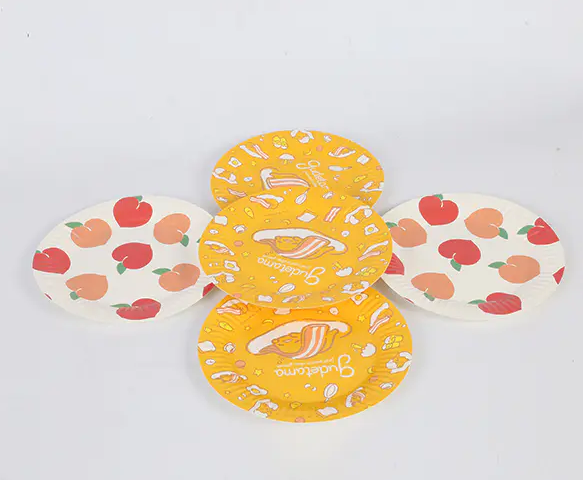When evaluating the practicality of using Disposable Paper Plates, one of the most commonly asked questions is about their load-bearing capacity. This is an important consideration, especially when serving meals that include heavier food items like pasta dishes, meats, or saucy entrees. The strength of Disposable Paper Plates varies widely depending on their material composition, construction quality, and intended use, and understanding these variables is essential for choosing the right type of plate for any occasion.
Standard Disposable Paper Plates found in most supermarkets are generally made from lightweight paperboard material. These plates are suitable for dry, light foods such as sandwiches, cookies, chips, or small portions of salad. However, when subjected to heavier food, they tend to bend or warp under pressure, which can lead to spills or require the use of multiple stacked plates for added strength. In such cases, the structural integrity of the plate is compromised due to the paper’s limited resistance to compression and moisture.
Higher-grade Disposable Paper Plates, particularly those labeled as heavy-duty or coated, offer significantly better load-bearing performance. These plates often include one or more layers of polyethylene coating or biodegradable PLA coating, which not only improve moisture resistance but also reinforce the overall stiffness of the plate. This coating prevents liquids from soaking into the plate, thereby maintaining its shape and preventing sagging even when loaded with greasy or juicy foods like barbecue ribs or curry.
Additionally, some premium Disposable Paper Plates are made from molded fiber or sugarcane (bagasse), materials that naturally possess higher tensile strength and load capacity. These plates are designed to hold full meals and are often used in catering, food trucks, and eco-conscious events. They can generally support up to 1–2 pounds (0.45–0.9 kg) of food without losing shape or requiring double-stacking. Because they are made from more rigid and fibrous materials, they also perform better under heat, making them suitable for hot foods and microwave use.
Plate design also influences performance. Plates with raised rims or embossed edges offer additional rigidity and grip, which can help support the weight of the contents. Some designs even feature compartmentalized sections that distribute weight more evenly and reduce the risk of collapse. Users seeking reliable load-bearing capacity should pay close attention to such structural features when making a purchase decision.
While Disposable Paper Plates are not intended to compete with ceramic or plastic dinnerware in terms of durability, they can be more than sufficient for many use cases when selected thoughtfully. For heavier meals, choosing thick, coated, or molded fiber versions is essential. Understanding the limitations of basic paper plates and knowing when to upgrade can make all the difference in avoiding messes and improving the dining experience, whether at a picnic, party, or casual gathering.
In conclusion, the load-bearing capacity of Disposable Paper Plates is not fixed but varies greatly by material, design, and quality. With the right selection, they can support everything from light snacks to full entrees without issue, combining convenience with practicality for a wide range of food service needs.
1. High-quality virgin pulp and film-coated base paper material
2. Simple design, fresh and natural beauty;
3. Made of pure virgin fiber pulp, no fluorescent treatment, green, healthy, and environmentally friendly
4. Food-grade degradable coating. It is waterproof and oil-proof, and the embossed design of the disc is non-slip and wear-resistant.
